Do you see those weird traces going away from us, perpendicular to the wave crests, but in parallel to the bright stripes on the sea floor (I talked about those in yesterday’s post), looking almost like waves but not quite? What’s going on there?
Something very cool! :-)
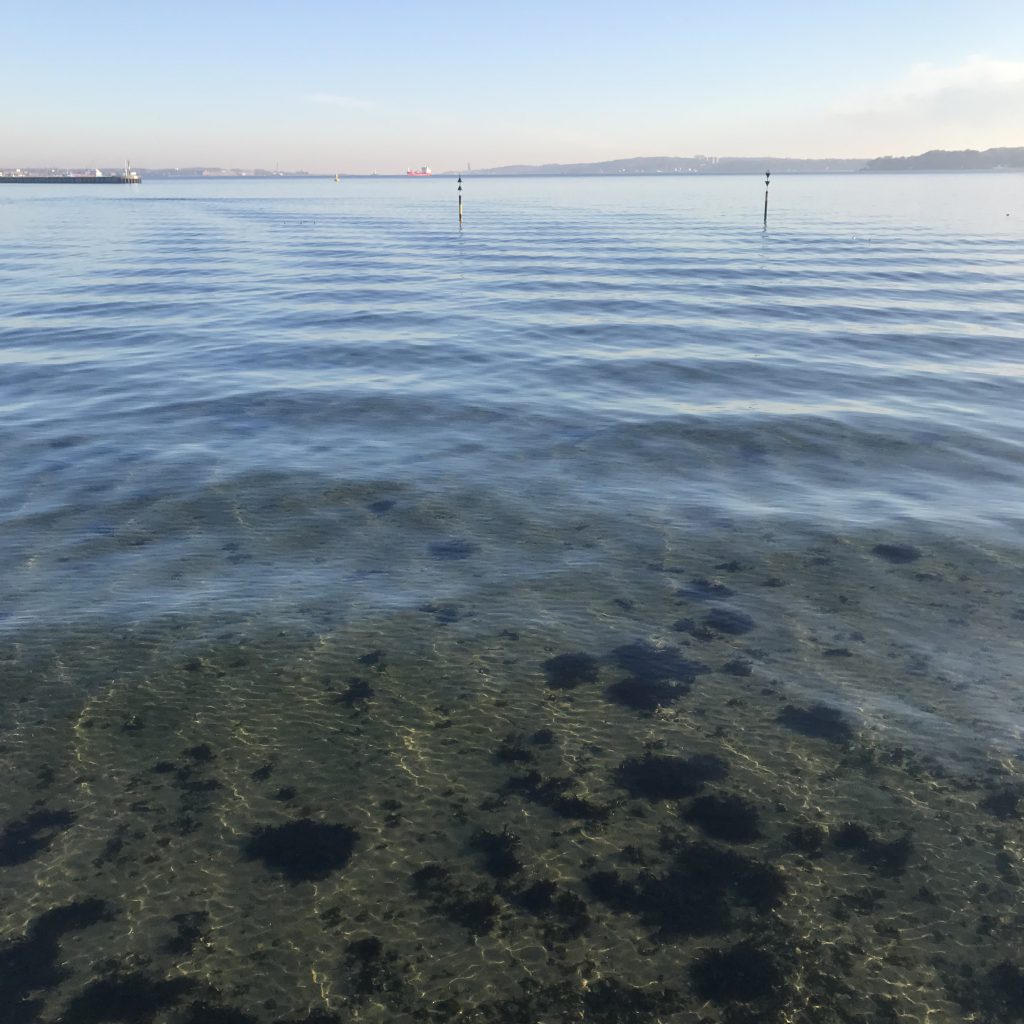
In the gif below, I have drawn in several things. First, in red, the “weird” tracks that we are trying to explain. Then, in green, the crests of two different wave fields that are at a slight angle to each other. I’m first showing one, then the other, then both together. Lastly, I am overlaying the red “tracks”.
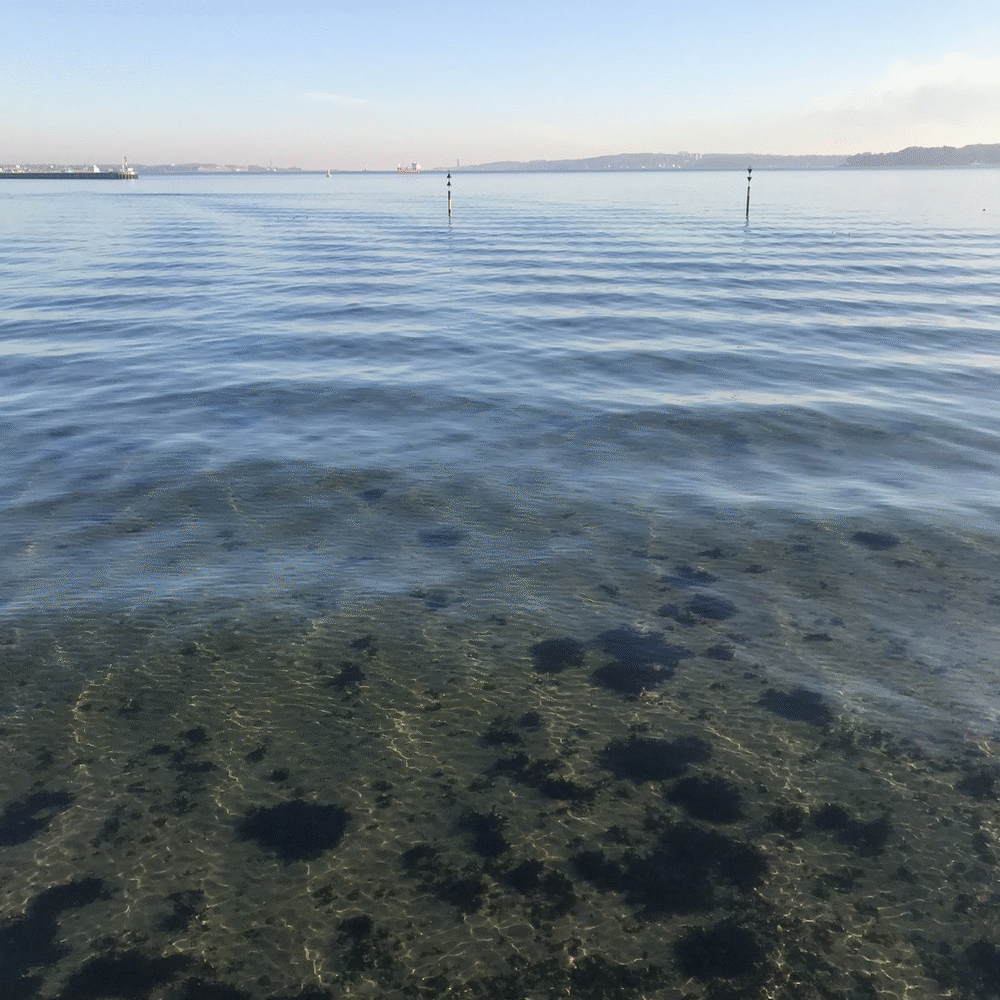
So this is what those tracks are: They are the regions where one of the wave fields has a crest and the second one has a trough (i.e. where we are right in the middle between two consecutive crests). What’s happening is destructive interference: The wave crest from one field is canceled out exactly by the wave trough of the other field, so the sea level is in its neutral position. And the wave fields move in such a way that the sea level stays in a neutral position along these lines over time, which looks really cool:
Some more pics, just because they are pretty and I like how they also show total internal reflection :-)
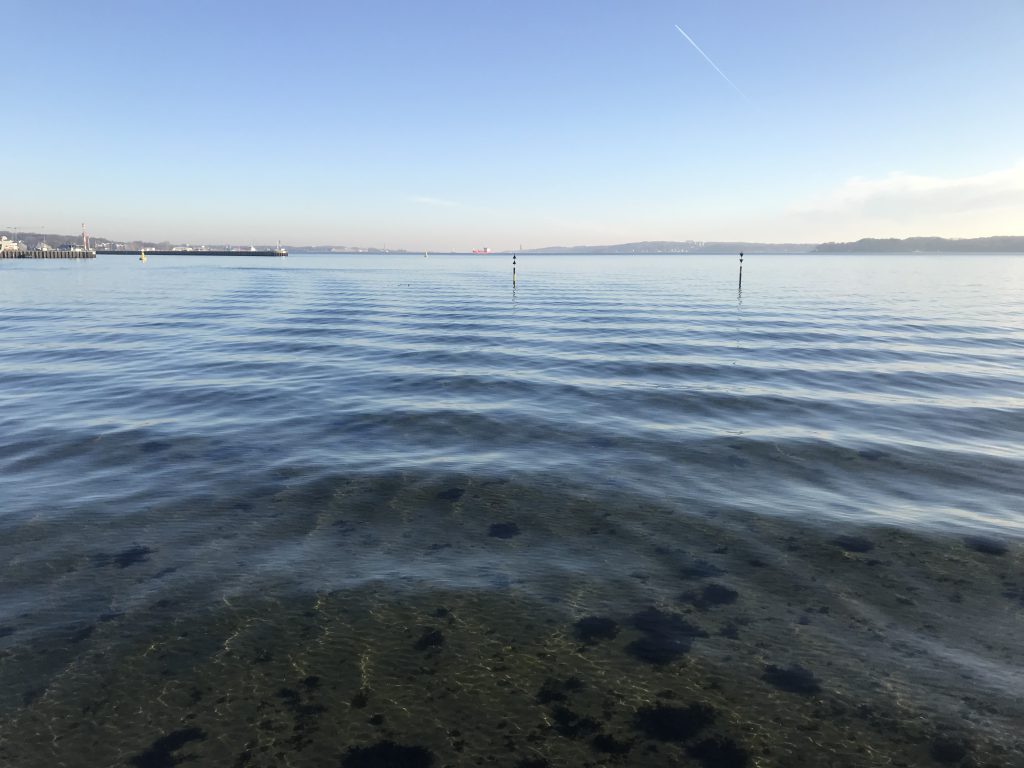
And don’t you just love the play of light on the sea floor?
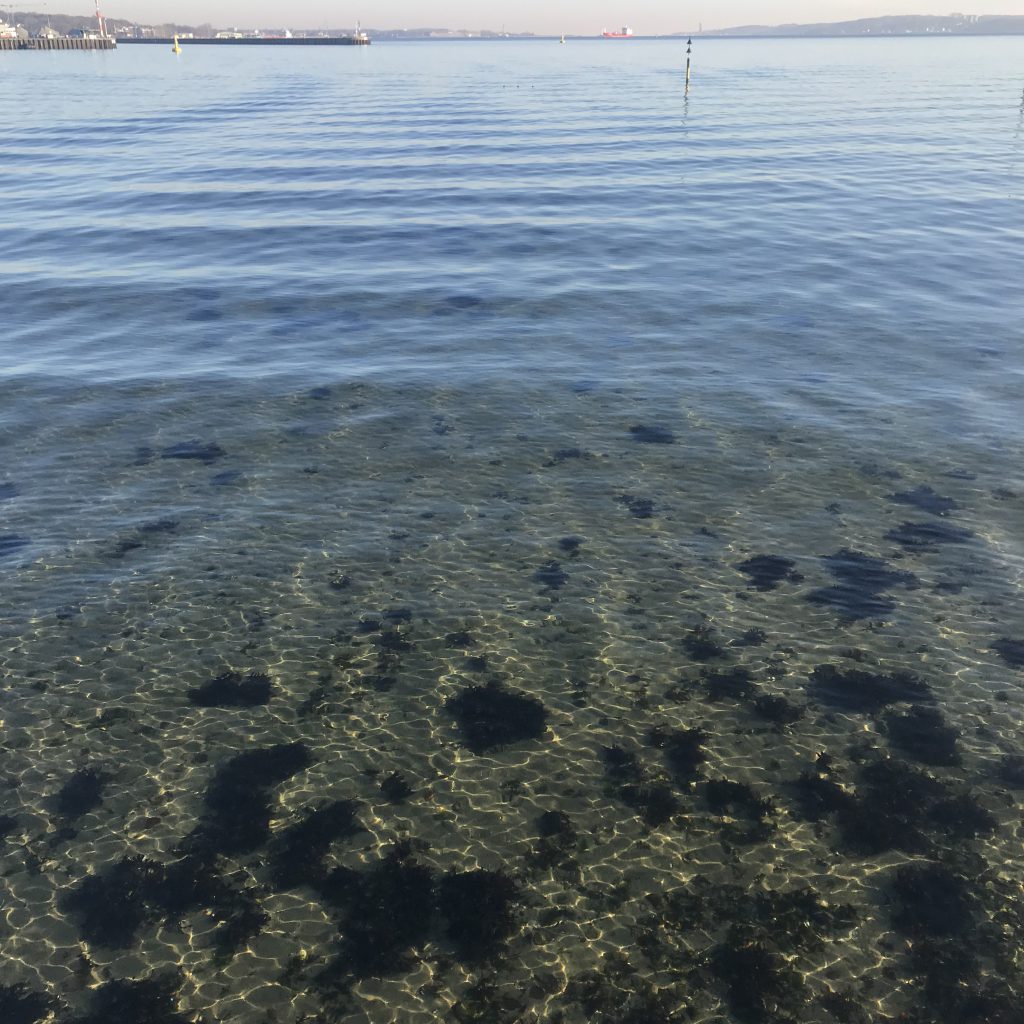
And even though these weird neutral sea level stripes are parallel to the bright stripes on the sea floor, I don’t think that the latter one is caused by the first. Or are they? Wave lengths seem very different to me, but on the other hand what are those stripes on the sea floor if they aren’t related to the neutral stripes in the surface??? Help me out here! :-)
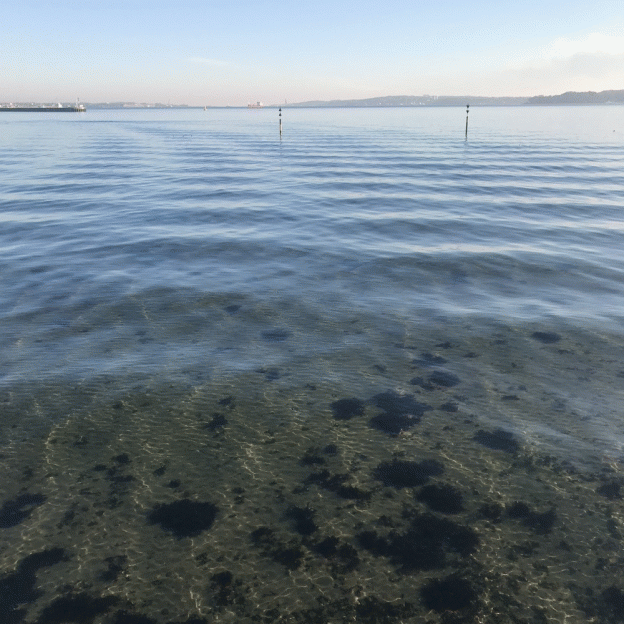
Thanks, another great explanation for a phenomenon I’ve seen but not really understood. I’d guess that the light patterns on the sea floor are caused by a third set of waves (with a short wavelength) running across the others from left to right – at almost 90 degrees to the two main wave fields. That is why the crests of the main wave fields are slightly lumpy (and lumpy at a much smaller scale than the wavelength of the two main wave fields, so it is not an effect of interference). For some reason I can’t quite explain these short wavelength waves are focussing the sunlight on the seafloor, but the larger waves do not – perhaps the focal distance of the larger waves is too long to focus on the shallow seafloor?
Focal distance is something I hadn’t thought about, that’s a really good point. Actually, maybe that’s the clue for how to get from the large wavelengths we see on the surface to the short wavelengths on the sea floor? If the focal distance really doesn’t match up with the water depth we would see spurious pattern of light?
But one thing that keeps bugging me: I think whenever I’ve seen those light pattern on the sea floor, they were perpendicular to the direction of the sun light. Why??? (Or did I just make that up in my mind? Obviously I will have to go back to the sea and observe a lot more. Life is hard ;-))